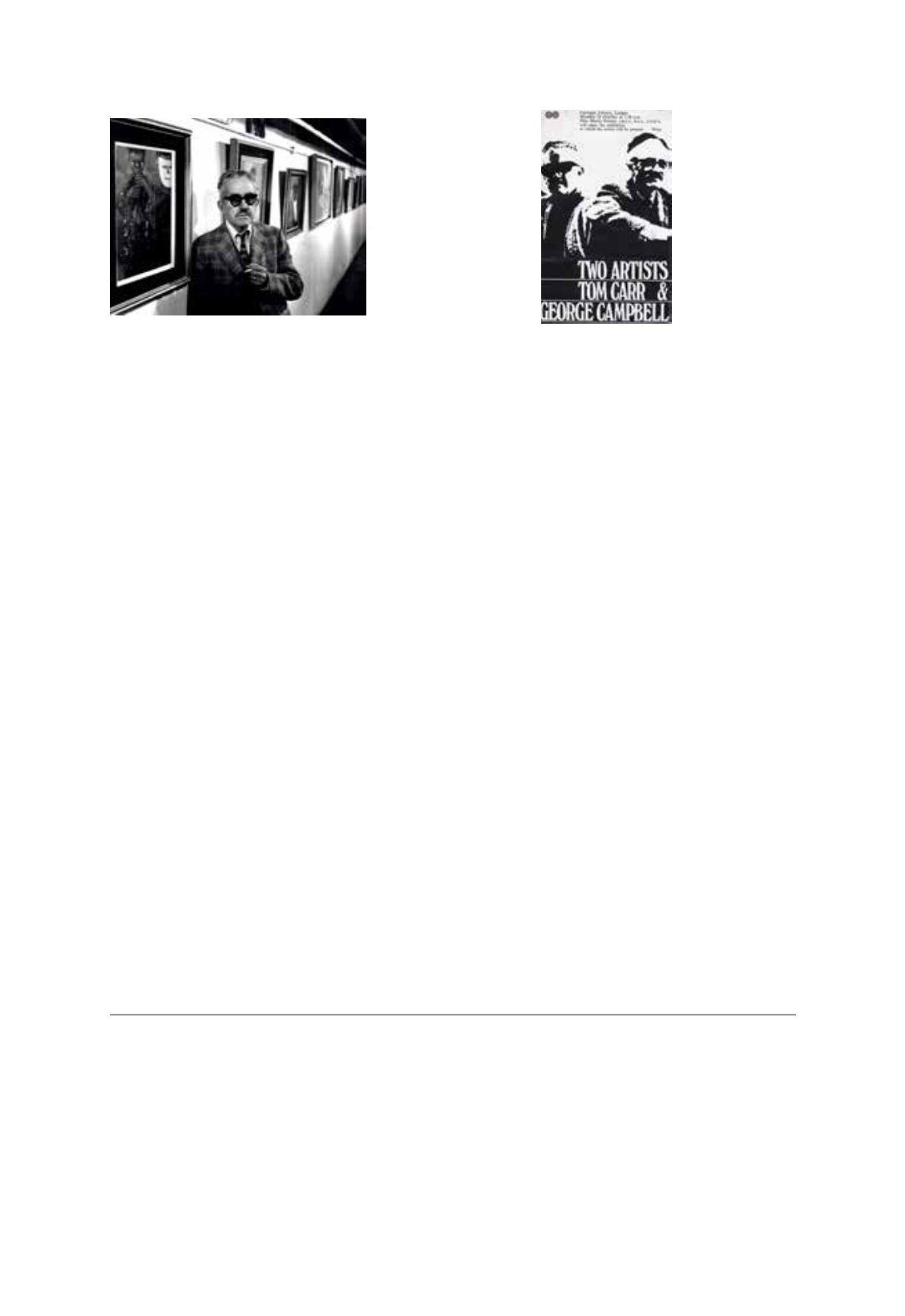

132
When questioned about Campbell’s political views, friends suggested he wasn’t political.
Others stated that due to his background he was ‘conscious of being labelled one way or
another’.
170
In Dillon’s letter to
The Irish Times,
he announced he was also withdrawing
his work from a three-man show exhibition organized by the Arts Council of Northern
Ireland with an artist living in the South and another in the North. The two artists were
George Campbell and Tom Carr.
171
Following Dillon’s public refusal to submit works to the
touring exhibition with Carr and Campbell, the ACNI postponed the exhibition until 1974.
Armstrong was non-political, remarking in an interview that he ‘never really noticed whether
he was a Protestant or a Catholic’.
172
In the 1970s, Armstrong contributed to a large number of exhibitions, including group
shows.
173
He held two solo exhibitions at Tom Caldwell, Belfast, and Hendriks, 1972. In
association with Hendriks he held further solo shows at the Cork Society Gallery, Cork, 1972
and 1974. He also had solo exhibitions with the Kenny Gallery, Galway, 1976, 1977, 1979
and 1980.
The emergence of a range of art practices in regional centres and new galleries
174
saw a notable
shift from modernism to post-modernism. Campbell didn’t and couldn’t accept what he
saw as the lack of human presence in contemporary art: ‘It's just a flat shiny thing…It’s so
dehumanized. I look at it and I might as well be looking at my door…It’s art for walking
through a hotel foyer on the way to get your key to room 410.’
175
During this period, he
also didn’t accept criticism of his work. James White recalled, ‘His [George Campbell’s] face
would be filled with contemptuous amazement if his competence in his creative field was
called into question. None who knew him well would ever do so.’
176
170
Interview with George and Janet Walsh, 4 February 2014. Campbell stated as a young man he was
confused as he was dealing with two sets of ideas, but concluded that he was a ‘Ulster artist, a Leinster
artist, and in love with the Glens of Antrim, Donegal, Connemara, the Aran Islands…’ ‘George Campbell’, Self
Portrait, 1973.
171
Letter from Dillon to Kelly, 3 September 1969.
172
Deirdre Purcell ‘talks to artist Arthur Armstrong’,
The Irish Press
, 24 January 1983.
173
Watergate Gallery, Washington, 1974 and Gallery 22, 1978.
174
The Oliver Dowling Gallery, 1975. Its focus was on minimal and conceptual art.
175
Ciaran Carty, ‘He Loves Talk but Doesn’t Trust Words’,
Sunday Independent
, 5 March 1978.
176
James White, ‘An Artist of Highest Rank’,
The Irish Times
, 22 May 1979, p 5.
fig.216: George
Campbell at
his exhibition,
‘Friends &
Acquaintances’,
(1974)
fig.217:
Tom Carr
& George
Campbell’s
catalogue,
1972



















